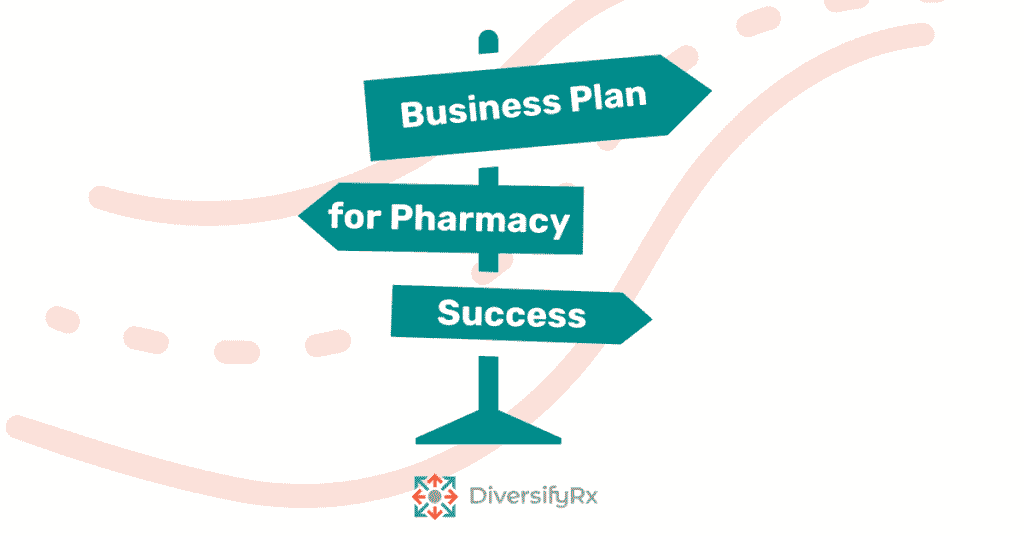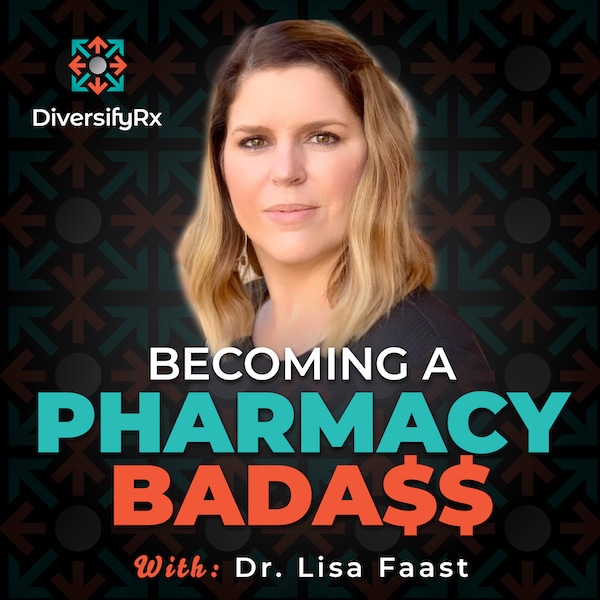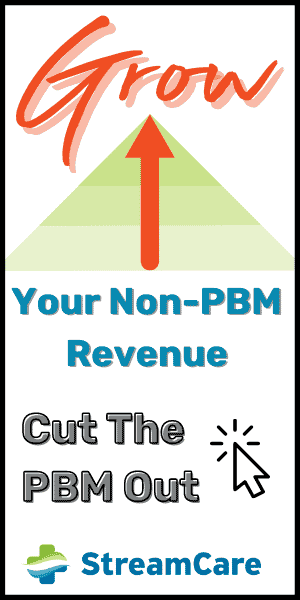Creating the right pharmacy business plan will set you up for success for years to come.
This is an update to my original America’s Pharmacist Magazine article “Road Map For Success” published in June of 2011.
Congratulations!
You have chosen to join a special class of people known as independent pharmacy owners. Your journey from this point on will have you experiencing some of the broadest range of emotions imaginable. Don’t be surprised when you cry, laugh, pray, yell, ‘Why didn’t anybody tell me this?’ all within the same hour! When you have decided to own a pharmacy, whether a startup or a purchase, you need to get a map directing you where to go. Unfortunately, there is no magical universal paper telling you your every step to make and every pothole to miss. One universal tip is your first step should be a business plan for your pharmacy.
Being A Great Pharmacist Does Not Equal Being A Great Pharmacy Owner
You may be a fantastic pharmacist, but that doesn’t mean those skills will translate into being a good pharmacy owner. A pharmacy is a business at its core. Your business plan will take a lot of time and effort, and it is an essential process for the owner to go through. New owners generally require a large amount of capital ranging from $400,000 to $600,000. You probably don’t have this under your mattress and will have to go to a bank for help. When an application is received by a bank, the main attraction will be your business plan. The decision to loan or not to loan rests on the quality of this document.
The Makings of a Top-Notch Business Plan for Pharmacy Owners
These 5 categories are considered most important:
- Market research
- Marketing plan
- Financial projections
- Operational plan
- Your individual fingerprint
Remember that banking underwriters make their decisions by the numbers; get comfortable with numbers now. You don’t have to reinvent the wheel when writing your plan. I recommend using tools like Business Plan Pro to help you put your plan together. It is available online as cloud-based software and walks you through each step.
Market Research
Market research for an independent pharmacy is often left at population statistics and the number of competitors. Those points are important, but your digging should go far beyond that. Researching should include teaching yourself how to be an owner of a business. This skill is learned. There are great books such as E-Myth and paid organizations like Pharmacy Development Services and NCPA that can help get your pharmacy ownership skills up to par. With free networking groups on Facebook, like DiversifyRx, you can more easily collaborate with other owners who help form your business education base. The best advice is often free, and don’t be embarrassed to ask for help or direction; it will only make you better faster.
Your Competition
Understanding your competition and knowing how you want to be different is an essential aspect of market research. Shop other pharmacies, both chain and independent, so you can get a good idea of what you want your pharmacy to look and feel like. If you see something you like, such as register counters, don’t be shy and ask where they got theirs from. I recommend researching your vendor choices thoroughly. A wrong choice can be very costly. For example, if you buy a point-of-sale software and end up hating it, you probably won’t be able to afford to change it for many years. This happened to me, and I was stuck with a crappy POS for far too long.
Details of Market Research
Some of the areas to focus your market research should include:
- Population numbers within a 5-mile radius of your anticipated location. While you hope your business will draw patients in from a large area, bankers will focus on a smaller radius.
- Demographics of that population. Include the average age, the gender breakdown by percentages, ethnicity breakdown by percentages, avg household income, and size. This information will not only help the bankers understand the available market and the likelihood of people nearby to become your patients, but this information is also crucial to you as a pharmacy owner to understand the opportunities you can take advantage of. For example, if you have an elderly population, what products you carry will be different from those near a young population.
- Partnerships between you and any complementary businesses. Identifying the number of doctors, surgical centers, dentists, and more nearby will be a crucial metric to make your case for continued growth. If you establish likely partnerships in your planning phase, this could give you an advantage in how your growth projections are calculated.
- Therapeutic areas of focus. Your demographics, along with partnerships, will allow you to identify areas of focus that your pharmacy may want to specialize in. When including this focus in your plan, identify the products that are correlated with that area. Include the average profit margin and the average volume for products in that space.
Ideal Customer
Market research should help direct you towards your ideal customer. It is imperative to determine who your best customer is. Your entire business plan should cater to this ideal customer. You might select families with children or perhaps worker’s compensation patients. The only wrong answer here is to not have one. Bankers will make sure you have done this type of research and planning. They will want to see that you tailor your offerings to meet this target audience’s lifestyle and needs. If you pick families with children, then your hours of operation should not be Monday through Friday, 9 am to 5 pm. The typical question you will be asked will be, “What is your niche?” You better be able to answer the ‘who’ and the’ why’ for this question. The answer is what makes you unique.
A pharmacy is unique because you have two different types of ideal customers; patients and prescribers. Throughout your plan, it’s important to share how you will address each of these in each aspect of your plan.
Often new business owners will say, ‘Everyone is my target audience.’ They are trying to say that they will provide service to anyone; however, what a banker hears is that you haven’t done your homework. Although the interpretation is accurate that you may provide service to anyone, you need to identify which patient will be your most profitable.
Marketing Plan
A marketing plan is essential to any profitable business, but it is crucial to pharmacies with so much competition and tight margins. Knowing your ideal customer will help you decide where to spend your marketing capital. Marketing can be expensive, which makes mistakes very costly. Some of the best marketing is practically free. Using the right combination of both paid and free is what we recommend. There are fantastic books on marketing and advertising, such as Seth Godin’s Purple Cow, 1-Page Marketing Plan, and anything by Tom Feltenstein.
Your marketing plan will vary significantly based on if you are doing a startup pharmacy or taking over an existing one. Marketing for a startup is going to be heavy on name recognition and introducing people to your brand. You might find yourself needing to overcome a tarnished reputation for an existing pharmacy, or you could keep with the status quo if it is working.
Marketing vs Sales vs Advertising
It is essential to understand the difference in terms of marketing, advertising, and sales. Marketing is about your name and branding. It can also be referred to as the look and feel of your pharmacy service. Marketing can be summarized as telling people who you are and what you do. Advertising is usually about highlighting products, services, or discounts. You should advertise specifics: flu shots, delivery service, or your grand opening. Sales are closing the deal, which means getting a first-time customer to come in and fill a prescription and then turning them into a repeat customer. Your processes, systems, and staff will be your sales team and are essential for giving your customers a truly remarkable experience that will make them come back again.
Many new pharmacy owners practice what we like to call “The Field of Dreams Marketing Approach”… if you build it, they will come. This is a plan to fail. You could have the best location and the best products, and if people don’t know who you are or what you offer, they will move right on by.
Below you’ll find different marketing areas to consider including in your plan, specifying how you expect to address each area for your business that you’ve selected. As always, in the pharmacy industry, be cautious of each of these items’ various legalities.
Free & Low-Cost Marketing:
- Relationship marketing. This is building relationships with different professionals in your area by joining different clubs or organizations such as the chamber of commerce or starting a club that attracts your ideal customers.
- Customer Referral programs are my favorite type of marketing; however, it is often overlooked in the dazzle of a marketing plan. A good customer referral program includes something of value to the referrer as well as the referred.
- Social media accounts. Getting your audience to follow you on social media is a great way to connect with your customers. You can use social media as a way to let your audience know about promotions, community events, business events, business changes, and even industry news. One major mistake many people make is using their social media to only advertise (no one wants to follow you for that). Find a way to provide meaningful content that your ideal customer will want to have in their feed.
- Local SEO. This is last on the free list, but definitely not least. In fact, it should probably rank right at the top of importance. This is listed in the free column because claiming your listing on Google My Business, Yelp, Yahoo, Bing, and about a hundred others are free. However, there are some critical nuances to how it’s claimed and ensuring that it increases your SEO value. There are services available that can help you set them up properly and then provide maintenance and growth. As a local business bringing traffic to you through local search is a valuable tool that can be driving patients to you even while you aren’t working.
Paid Advertising:
- Video, video, video. This is listed first because it is connected to all other marketing efforts in one way or another. Video has an 80% higher engagement rate than any other marketing form right now and only growing. This could be something as simple as a promotional video telling your story about what separates you from your competition to tutorial videos for your staff and patients on your website. My friend and fellow pharmacy owner, John Hyer, does amazing videos for his pharmacy.
- Social Media Ads. There are several methods and opportunities to target your local audience where they are hanging out digitally. This activity will all be defined by who your audience is. For example, the fastest-growing user market for Facebook currently is the baby boomer generation. Tik Tok is typically for a younger audience. Tailor your ads for the demographic of each social channel.
- Radio Ads. Leveraging radio ads and getting a radio endorsement from a local radio host can be a good investment, depending on your audience. It takes someone at least 12 times to hear about a company before becoming a customer. Radio is one way to share your message with a wide audience. Talk radio was a high-performing marketing channel for me, while music radio bombed terribly.
- Direct Mail. Direct mail is seeing a resurgence in marketing based on how it is done. There are some great ways to introduce videos through QR codes, coupons, etc…
- Business or Community Events. Hosting events in your community is a great way to give back and the market simultaneously. I used to host Nacho Average Pharmacy customer appreciation days. Gather local entertainment businesses to join in the fun and help spread the word.
Get Help
Marketing can be a difficult area to understand. You know you should do it, but you don’t know if it’s working. The answer, change the concept of not knowing if it’s working. There are so many ways to track if your different marketing strategies are working, and it takes just a little bit of money and time to remove the cloak of invisibility. If you choose to try radio ads, have a plan to track their success; otherwise, you could be wasting your money. One of the easiest ways is to have a new patient process. For every new patient, ask how they heard about you. Bankers will love that you have a marketing tracking mechanism.
Financial Projections
Financial projections, also known as Pro Formas, are the meat and potatoes of your business plan. Make these as solid as you can. A business plan software will help you make the tables and charts and ensure you don’t miss any categories. You can base your plans on industry-standard growth projections for a baseline. Go beyond this by projecting faster and slower growth. You may think that quicker growth is always better, but not so. Accounts receivables can wreck your cash flow if you grow too fast without a proper plan. Banks want to know where your and their money is going to be spent.
Along with all the typical expenses such as rent, energy, and equipment, never forget to include a salary for yourself. If you leave this out, this can be a red flag for lenders. Banks themselves offer a lot of resources. Visit several banks, we suggest local or regional banks, speak with their business associates and use their experience and knowledge to help you.
Resources
The Small Business Administration (SBA) offers many free resources. Interview your local banks for helpfulness, knowledge, and expertise with small business owners. You must join your local chamber of commerce. They offer many classes and workshops, often free, for local business owners. Our motto is to prepare for the worst and hope for the best when projecting budgets. Learn basic bookkeeping terminologies such as accounts receivable, payables, and cost of goods sold; Bookkeeping for Dummies is a great review.
It is crucial to have a good CPA on your team, one that is familiar with pharmacy. Pharmacy financials is different from other retail businesses, and those differences can cost you thousands every year if you have the wrong financial team. You should interview several personally and get recommendations from other pharmacy owners. Your CPA should be readily accessible because you will be calling them frequently. They will help you choose what type of entity to have for your pharmacy business. A good CPA will help you manage your tax liability and be a useful resource for business decisions in the future. Here at DiversifyRx, we recommend pharmacy-specific accountants at Rx Advisors.
Operation Plan
Creating an operational plan is often overlooked by prospective pharmacy owners. An excellent place to start is an organization chart. In the beginning, you will fill most of the positions, then as you grow, the owner will occupy less as you hire or outsource. This exercise is vital so you know when and how many people to hire and at which positions. Employee benefits and pay are also essential to think about at this point. In our opinion, your business starts and ends with your employees. The quality of your employees greatly reflects the quality of your business.
Branding
This section should also include your branding. Branding encompasses logos, themes, a byline, and your business model. Unless you are also a graphics specialist, I recommend you hire out creating a logo. Everything that is seen by the public should have your logo and byline on it. Your byline should be a descriptive one sentence that lets the reader know what your business model is. Are you a champion customer service ninja, or do you have rock bottom prices? Now is the time to understand that you cannot be everything to everyone. When you pick a specialty, such as service, you will inevitably leave some potential customers out, those looking for the lowest prices, for instance.
Make sure your organization chart, employees, and business model fit together into a cohesive plan. If you want to offer the lowest prices, you should hire fewer employees to reduce costs. If your business model is to provide the best customer service possible, you will need to spend more. To achieve outstanding customer service, you will need more computers, more registers, and more employees.
Legal Concerns
The operations section is an excellent time to ensure you comply with all of the laws and regulations for businesses. Most of the trouble for small businesses comes from human resource issues. Minimum wage, hiring, firing, worker’s compensation, and unemployment are among the most common pitfalls for small business owners. You might consider joining an association to help, such as in California, they have CEA: California Employers Association. They help educate and answer questions for a small fee. Your local chamber of commerce can give some recommendations as well.
Personal Fingerprint
Your business plan is also a chance to show how you will differentiate yourself from your competitors. What makes you unique? The bankers really like learning about your ‘X’ factor. What is going to drive a customer into your store? Once they get there, what are you doing to keep them? The more unique you can brand yourself, the better grade you will receive on your overall plan. This is your business. Make sure your essence is present throughout the project. We all can get into a trap of immolating other people and businesses. If an idea doesn’t really fit you, it will never succeed, no matter how good the idea is. This is your chance to do pharmacy your way. Concentrate on what is important to you.
Making the Leap to Pharmacy Owner
Becoming an owner of a pharmacy for the first time or expanding to multiple locations can be an exciting and stressful time. There are so many decisions to make that will impact your business forever. You will need capital to turn your idea into reality. The best way to win those tight dollars from investors and banks is to have a great business plan. Use tools in the business industry and well as the pharmacy industry to make a complete plan. When you feel overwhelmed, just remember this has been done before and talk to other owners to get help.
Don’t forget to join the DiversifyRx Facebook group for free resources and advice to help you in your pharmacy ownership journey. You can follow us on LinkedIn too.
















